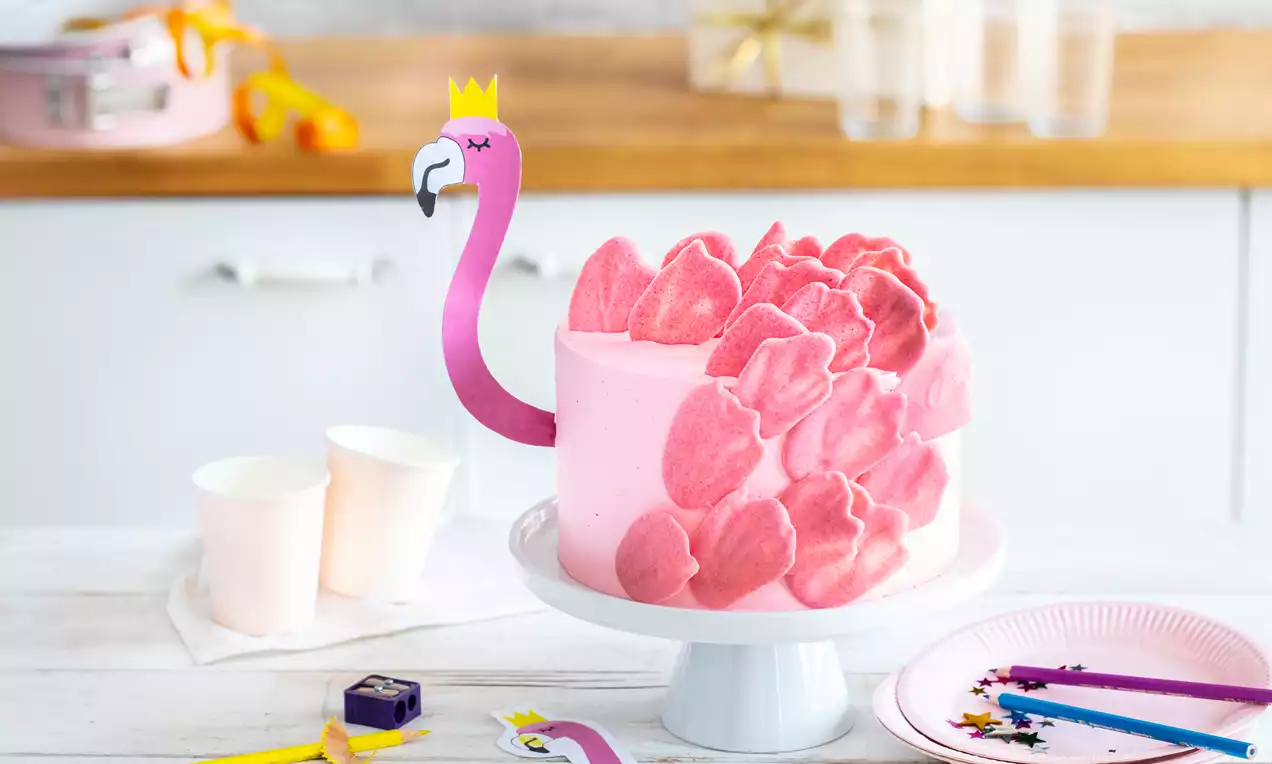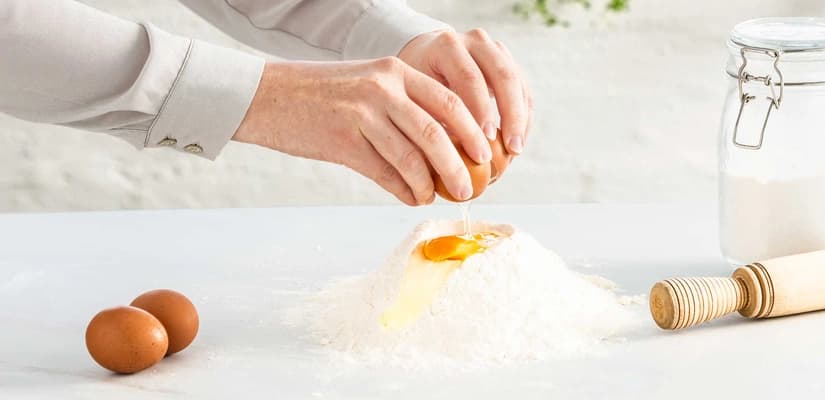
Flamingo Cake
Ingredients
Preparation:
For the biscuit base, preheat the oven (top/bottom heat: 180 °C). Line the base of two spring-form tins with baking paper. Separate the eggs into egg white and yolk. Mix flour, cornstarch and baking powder. Stir the egg yolk with a third of the sugar, flavouring and water until foamy. Beat the egg white with the rest of the sugar, vanilla sugar and salt until stiff, gradually stirring in the egg yolk mixture. Sieve the flour mixture into the mix by portion and stir in. Add the mix equally into the spring form tins, smoothen and bake on the middle shelf of the oven for approx. 20 minutes. Remove from the oven and allow the cakes to cool completely.
Top And Bottom Heat Oven Temperature: 180 °C
Meanwhile for the French buttercream, heat up egg, sugar and salt in a metal bowl placed over a boiling water bath, stirring constantly with a whisk until it reaches a temperature of 85 °C. As soon as it reaches the right temperature, remove the bowl from the water bath and whisk the mixture using a hand stirrer with whisk attachment until the mixture returns to a temperature of approx. 25 °C. This may take up to 20 minutes. Meanwhile, beat the butter until it is white and creamy. This will take approx. 5 minutes. Then gradually stir the egg mixture into the butter and add the flavouring. Finally, wash the raspberries then dry using a towel. Puree 300 g raspberries and sieve. Gradually stir the raspberry puree into the buttercream.
Release the spring-form tins from around the biscuit base and remove the baking paper. Cut each base in half horizontally so that you end up with four cake layers. Top the bases with the buttercream and the rest of the raspberries. Spread a third of the cream onto the bottom base and top with a couple of raspberries. Then layer a second base using the second portion of the cream, topping with raspberries. Layer the third base with the last portion of the cream and top with remaining raspberries. Place the last base on top and set the cake aside to cool for at least 1 hour.
Meanwhile for the cake’s cream cover icing, using the hand mixer with the whisk attachment, cream together the butter, icing sugar, salt and flavouring until a white, fluffy mixture is formed; this can take a few minutes. Colour heavily with pink food colouring as desired, then coat the cake so that the bases are fully covered and set aside to cool again. Store the rest of the cream at room temperature.
For the flamingo’s feathers, melt the white chocolate by stirring over a water bath at medium heat. Meanwhile, prepare a baking tray with baking paper. Add a couple of drops of pink food colouring to the couverture once the mixture has fully melted. Now place approx. 2 thirds of the couverture onto a marble surface and glaze the chocolate, i.e. spread it out using a dough card and then scrape it together again. Repeat the process until it cools to approx. 26 °C. Now mix with the rest of the warm chocolate until this new mixture reaches 28–30 °C. Use a spoon to blot the mixture onto baking paper then use the same spoon to strike out from the blobs, creating flamingo feather shapes, then leave to solidify.
Carefully remove the feathers from the baking paper and stick into the top of the cake. For the sides of the cake, use a small palette knife to add some of the pink cream to the feathers and place onto the cake. Make the flamingo shape, stick into the cake and serve.
Related Recipes

Whole Cake Recipes
Easter White Chocolate and Pistachio Cake

Whole Cake Recipes
Hearts Desire Surprise Inside Cake

Whole Cake Recipes